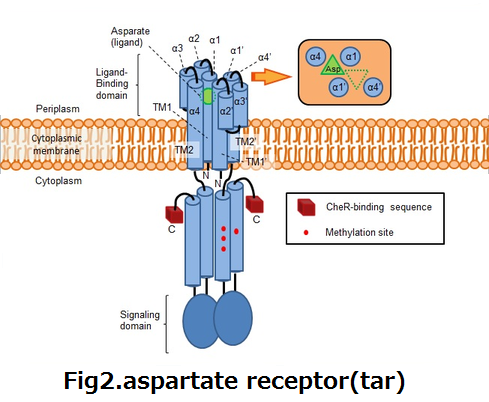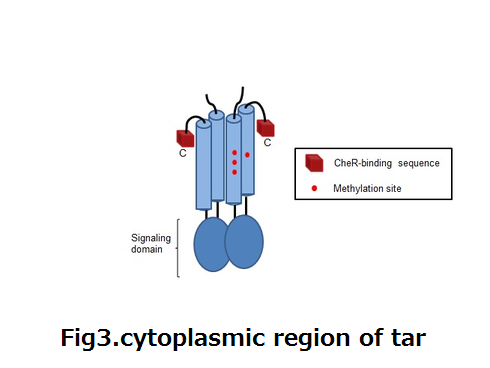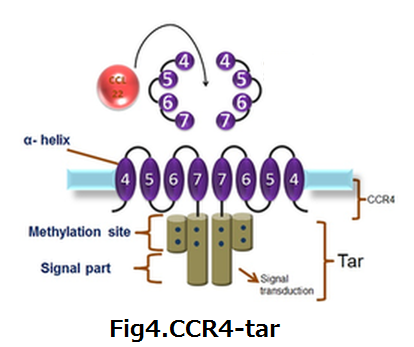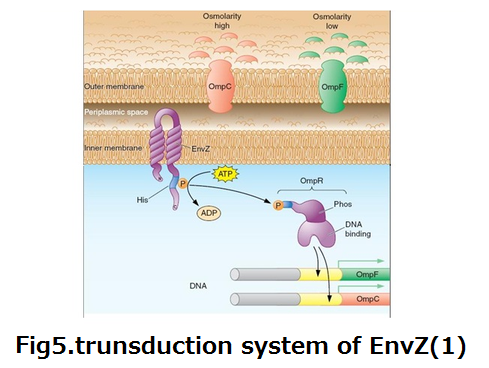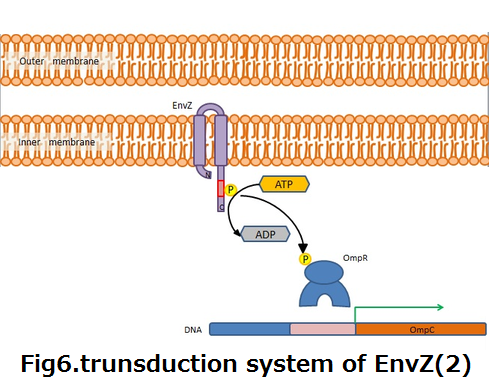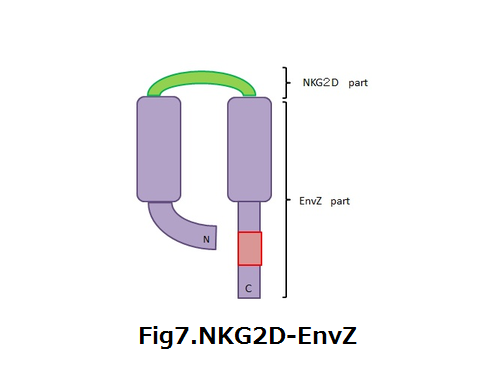Team:KAIT Japan/Project
From 2012.igem.org
(Difference between revisions)
(→E.coli which kill cancer cells.) |
(→E.coli which kill cancer cells.) |
||
| Line 71: | Line 71: | ||
:Natural killer cell is a kind of immune cells participating in an immune system. NK cells have some receptor on the membrane surface, and one of those is the membrane protein called NKG2D. NKG2D can receive stress protein which is called MICA. MICA express the membrane of cancer cells. | :Natural killer cell is a kind of immune cells participating in an immune system. NK cells have some receptor on the membrane surface, and one of those is the membrane protein called NKG2D. NKG2D can receive stress protein which is called MICA. MICA express the membrane of cancer cells. | ||
:<div align="right"><div style="margin-right:183px">'''fig1'''</div></div> | :<div align="right"><div style="margin-right:183px">'''fig1'''</div></div> | ||
| - | :NKG2D is a receptor of MICA which is a stress protein. MICA exist on the surface of the membrane cancer cells. | + | :NKG2D is a receptor of MICA which is a stress protein. MICA exist on the surface of the membrane cancer cells.(fig1) |
:We thought that E.coli could be combined with a cancer cell by recombinant NKG2D in E.coli. | :We thought that E.coli could be combined with a cancer cell by recombinant NKG2D in E.coli. | ||
:We make use of these mechanisms. We constructed a stain of E.coli which has cancer killer ability.The design of the experiment was described below. | :We make use of these mechanisms. We constructed a stain of E.coli which has cancer killer ability.The design of the experiment was described below. | ||
| Line 87: | Line 87: | ||
[[file:KAIT_JAPAN-Project-emvz-07.png|right|]] | [[file:KAIT_JAPAN-Project-emvz-07.png|right|]] | ||
::The signal transduction mechanism of prokaryote and eukaryote about chemotaxis is radically different. | ::The signal transduction mechanism of prokaryote and eukaryote about chemotaxis is radically different. | ||
| - | ::CCR4 is G protein?coupled receptor (GPCR) from human. E.coli don’t have chemotaxis to CCL22 even though we make E.coli express CCR4 because of diffrent of signal transduction. So, we focus on aspartate receptor (Tar). Tar is chemotaxis receptor of E.coli. which cause chemotaxis to aspartic acid. We design the part which consist of transmembrane (Helical1~7) of CCR4 and cytoplasmic of tar. We call this part CCR4-Tar. When this part combine CCL22, E.coli go to cancer cells. | + | ::CCR4 is G protein?coupled receptor (GPCR) from human. E.coli don’t have chemotaxis to CCL22 even though we make E.coli express CCR4 because of diffrent of signal transduction. So, we focus on aspartate receptor (Tar). Tar is chemotaxis receptor of E.coli. which cause chemotaxis to aspartic acid. We design the part which consist of transmembrane (Helical1~7) of CCR4 and cytoplasmic of tar. We call this part CCR4-Tar. When this part combine CCL22, E.coli go to cancer cells.(fig2,3,4) |
| Line 121: | Line 121: | ||
::Menbrane protein EnvZ cascade, E.coli has it orijinall, as a osmolality sensor was used for the system what product Azurin by a signal for NKG2D. | ::Menbrane protein EnvZ cascade, E.coli has it orijinall, as a osmolality sensor was used for the system what product Azurin by a signal for NKG2D. | ||
| - | ::EnvZ perceive osmolality shift, and control expression of membrane protein OmpF and OmpC on the gene level. | + | ::EnvZ perceive osmolality shift, and control expression of membrane protein OmpF and OmpC on the gene level.(fig5,6) |
| - | ::Histidine which intracellular part of EnvZ is phosphorylated by ATP when the factor of osmolality shift is receptived to EnvZ. Then OmpR that is activator enhance OmpC. | + | ::Histidine which intracellular part of EnvZ is phosphorylated by ATP when the factor of osmolality shift is receptived to EnvZ. Then OmpR that is activator enhance OmpC.(fig7) |
::We applied the cascade to produce Azurin. | ::We applied the cascade to produce Azurin. | ||
Revision as of 21:03, 26 September 2012
|
|
|
|
|
|
|
|
|
|
E.coli which kill cancer cells.http://partsregistry.org/wiki/images/1/1d/Biosafety_Level1.png Biosafety Level 1
|
 "
"













